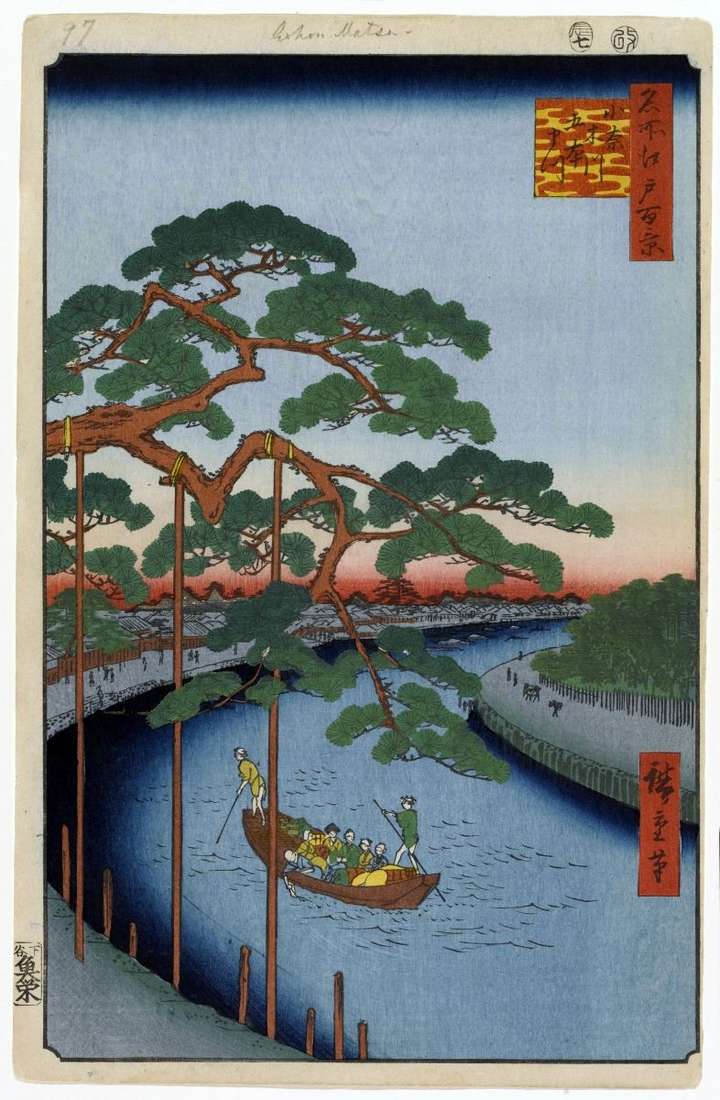
Once on the banks of the Onagigawa Canal five pines grew, but by the time of creation of this engraving, only one pine had survived, which Hiroshige depicted. Although the terrain still has the name “Goyhonmatsu”, which means “Five Pines”. Pine became one of the sights of the Eastern capital, here it was customary to admire the full moon.
The branches of the spreading pine planted in the engraving on the foreground are supported by three pillars through which the houses and a small humpback bridge, thrown through the Azukkengava channel, are visible, at the point of its confluence in Onagigawa. In fact, Onagigawa’s canal was quite straight and did not make such a sharp turn to the right, as shown in the engraving.
A similar image of the channel was required for the artist to show buildings along the canal and a bridge at the junction of the canal with Azukkengava. It is believed that Hiroshige wrote an engraving under the influence of the “Book of pictures of Edo’s sights”. The water of the Onagigawa canal, like the general color system, acquires bright, intense tones in the late leaf. The dark blue strip passes along the left bank of the canal. The sunset strip on the background of the engraving becomes wider.
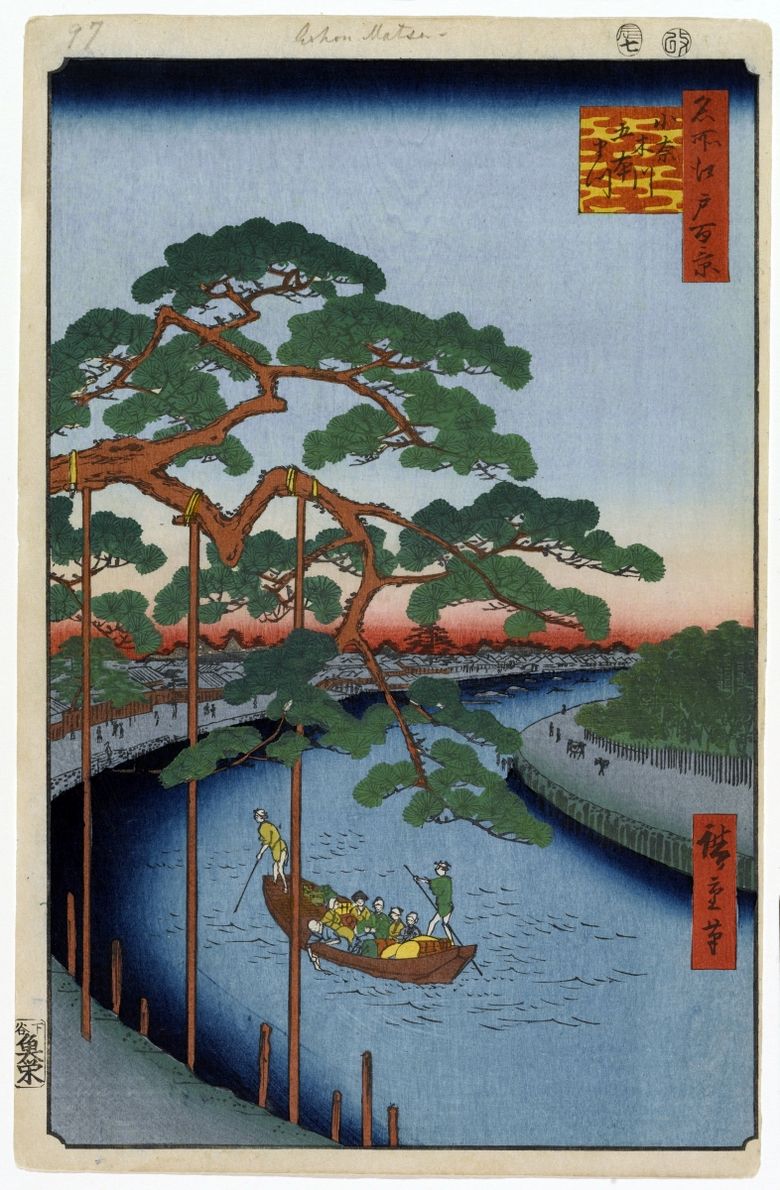 Pin “Gohonmatsu” sur le canal Onagigawa – Utagawa Hiroshige
Pin “Gohonmatsu” sur le canal Onagigawa – Utagawa Hiroshige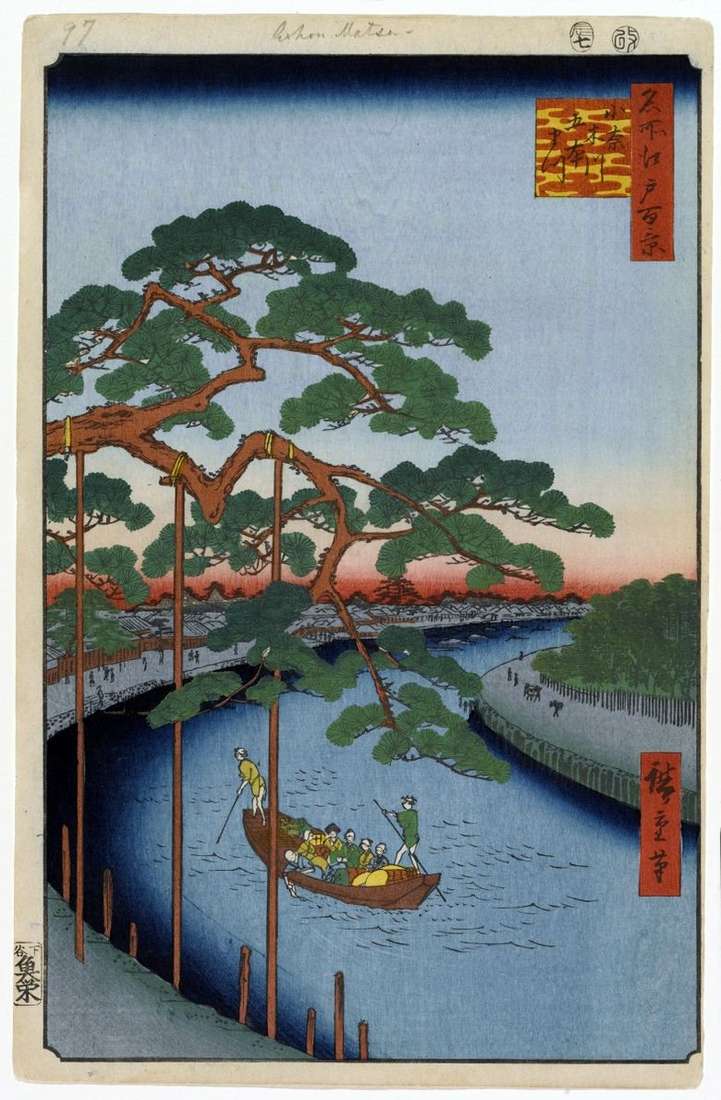 Pino “Gohonmatsu” en el canal de Onagigawa – Utagawa Hiroshige
Pino “Gohonmatsu” en el canal de Onagigawa – Utagawa Hiroshige Moon pine on the territory of the monastery in Ueno by Utagawa Hiroshige
Moon pine on the territory of the monastery in Ueno by Utagawa Hiroshige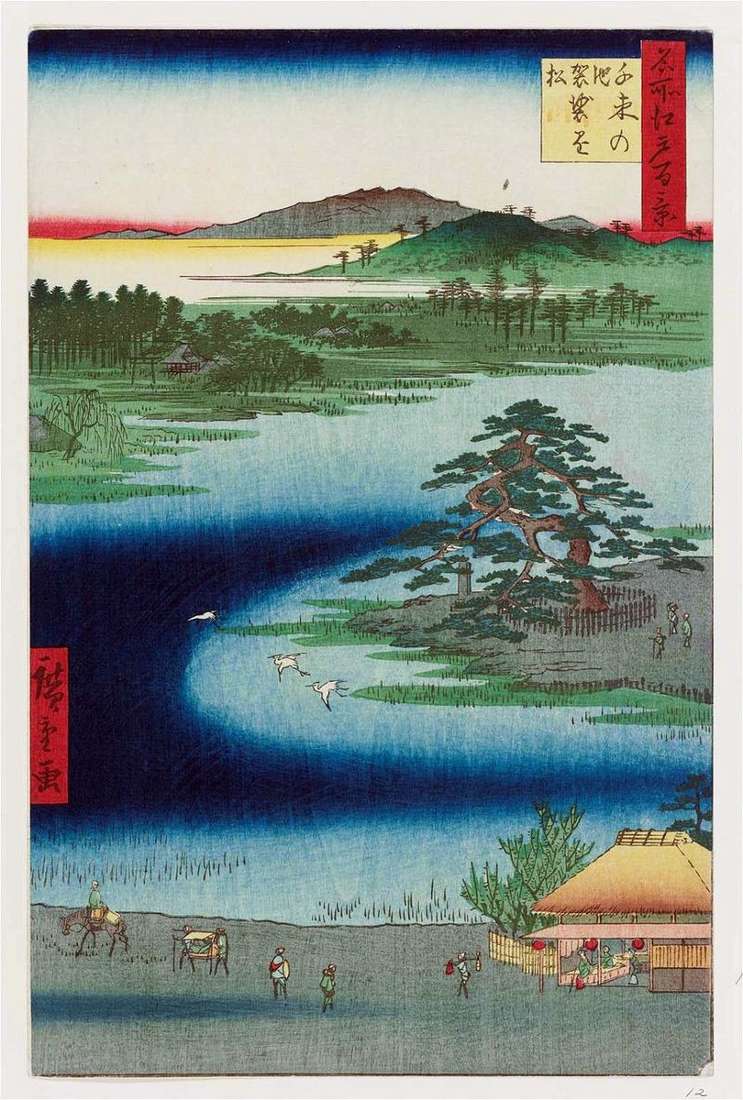 Pond Senzoku no Ike, pine Kesakakamaiu by Utagawa Hiroshige
Pond Senzoku no Ike, pine Kesakakamaiu by Utagawa Hiroshige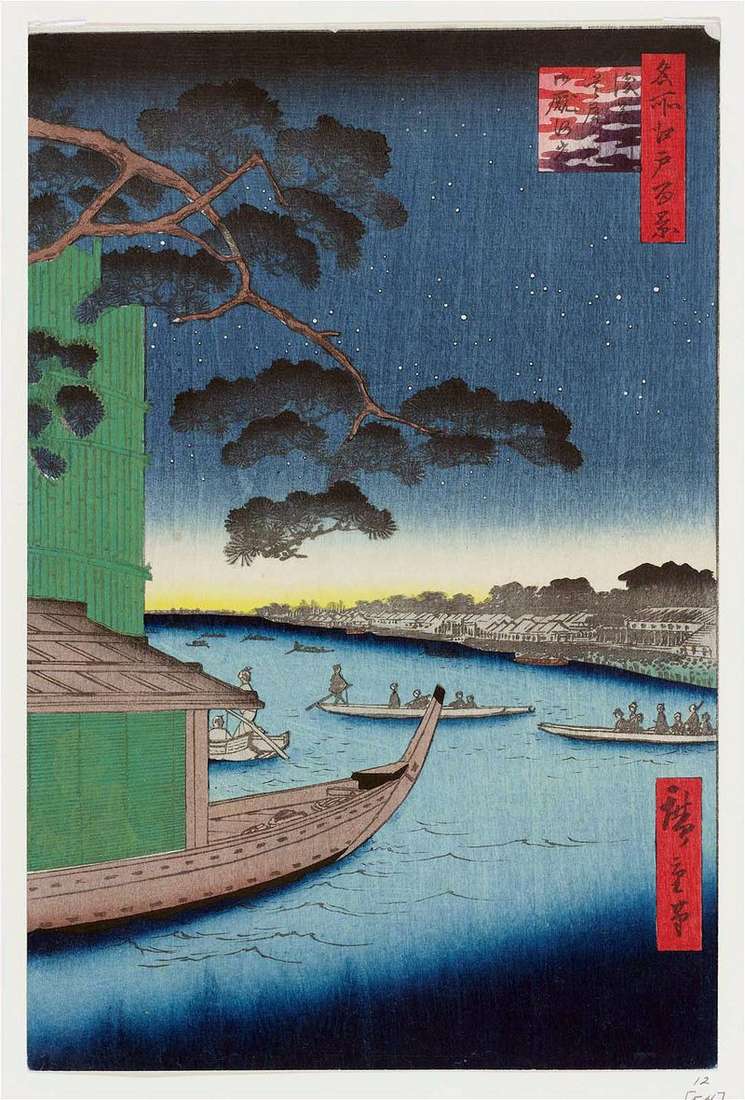 Pine Suube no matzo on the Asakusagawa River, the Ommayagashi Embankment by Utagawa Hiroshige
Pine Suube no matzo on the Asakusagawa River, the Ommayagashi Embankment by Utagawa Hiroshige Embankment Koumae by Utagawa Hiroshige
Embankment Koumae by Utagawa Hiroshige Protocols to Mitsumata. Vakare-nofunti by Utagawa Hiroshige
Protocols to Mitsumata. Vakare-nofunti by Utagawa Hiroshige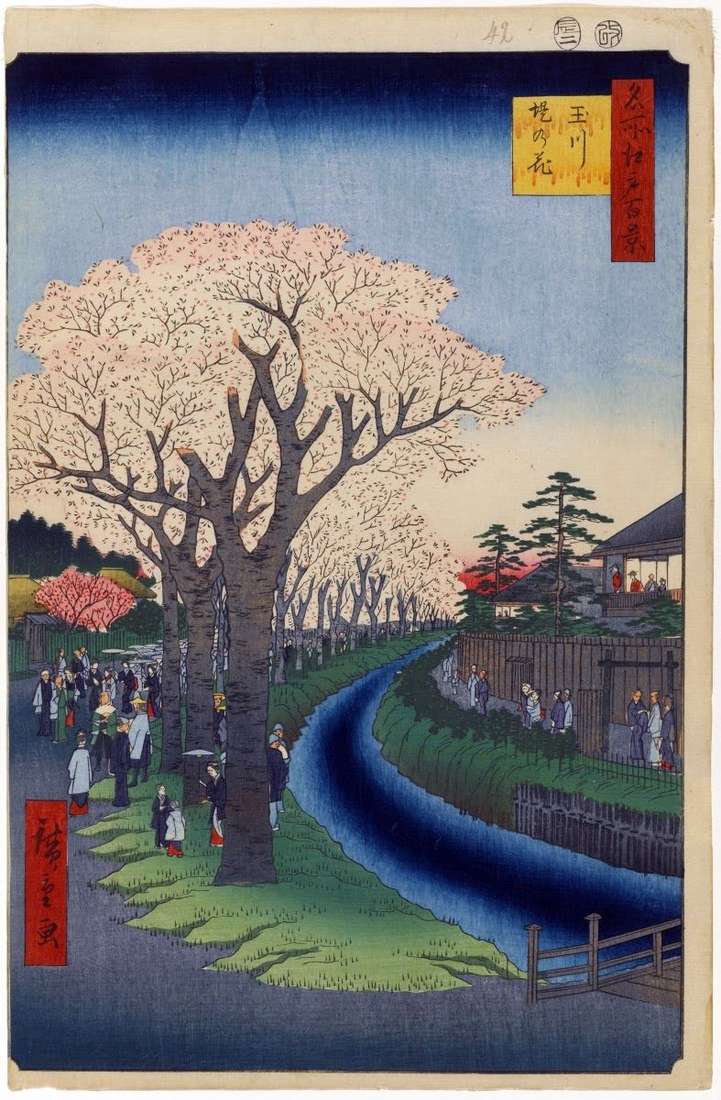 Sakura trees along the dam of the Tamagawa River by Utagawa Hiroshige
Sakura trees along the dam of the Tamagawa River by Utagawa Hiroshige